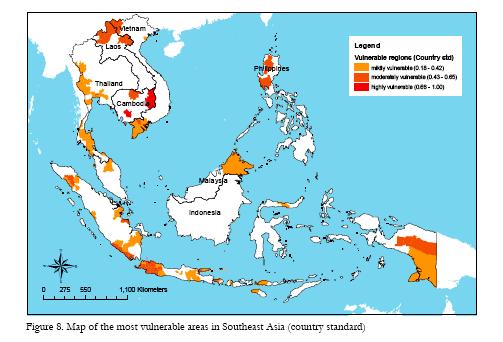A post at antropologi.info, which covers anthropology in the news, discusses a recent master’s thesis by Uy Ngoc Bui which “looks at the role of NGOs, the state and the people themselves” in the efforts to recover from typhoon Durian after it hit Bến Tre province in Southern Vietnam on 5 December 2006. Although there’s nothing specifically on agrobiodiversity in the article, this quote from the thesis struck me as very relevant:
My experience is that more research should be done on the bridging of relief aid with long term reconstruction and development. Relief aid has become more efficient and standardised, which is positive, but this is only short term help for people who are in a vulnerable situation. Decreasing their vulnerability and strengthening their capacity to overcome disasters in the future should be the key foci of anthropologists and NGOs.
I would guess she’s mainly thinking about the sort of relief that involves the shelter and health of victims, but one could say very much the same thing about seed relief after disasters — and indeed, it has been said. “Decreasing [people’s] vulnerability and strengthening their capacity to overcome disasters in the future should be the key foci” not only of anthropologists but also of agronomists and breeders.
